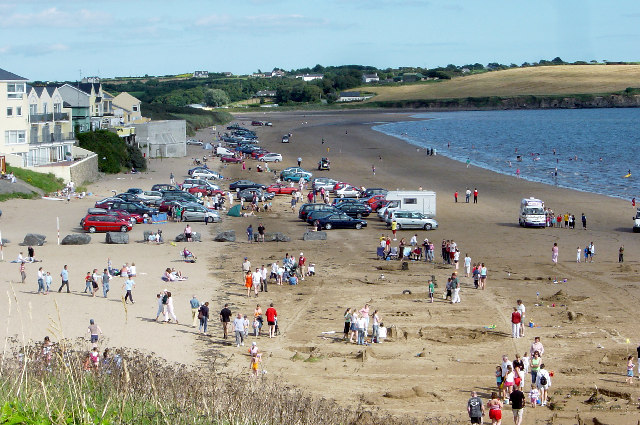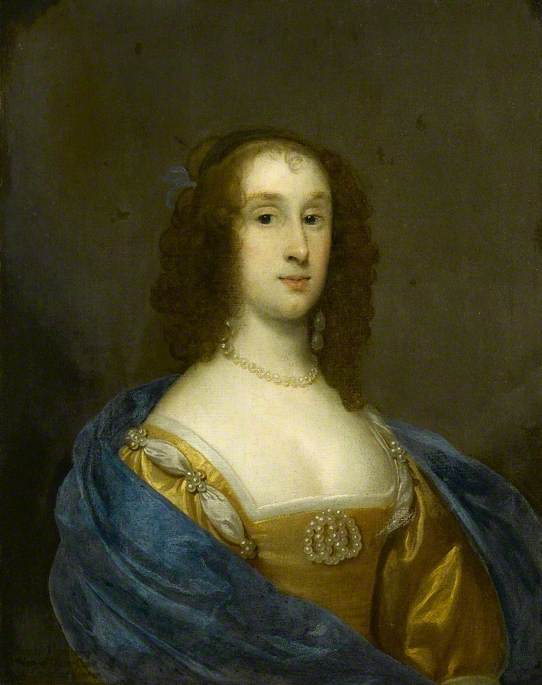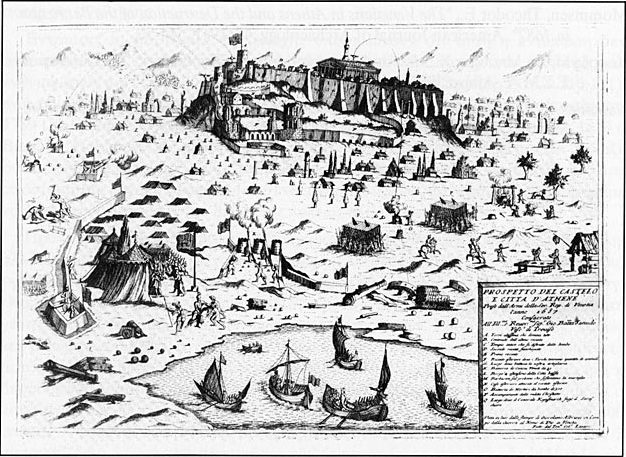|
Duncannon Fort
Duncannon Fort is a star fort and National Monument located in County Wexford, Ireland. Location Duncannon Fort is located in a strategic position on a peninsula in the eastern part of Waterford Harbour, giving access to Ireland's Three Sisters: the River Barrow, River Nore and River Suir. History A fort was built on this site by Normans in the 12th century, and there may have been an earlier earthen fort built by Gaelic Irish. The present star fort was built in 1587–88 by Queen Elizabeth I to defend Waterford from possible invasion by the Spanish Armada. Duncannon Fort saw major military action during the Irish Confederate Wars. Commanded by the Royalist governor Laurence Esmonde, 1st Baron Esmonde, it was besieged and captured by Irish Catholic Confederation forces under Thomas Preston, 1st Viscount Tara in January–March 1645, the first time that mortars were used in Ireland. Oliver Cromwell failed to retake Duncannon in 1649, but it surrendered in 1650 after a blocka ... [...More Info...] [...Related Items...] OR: [Wikipedia] [Google] [Baidu] |
Duncannon
Duncannon () is a village in southwest County Wexford, Republic of Ireland, Ireland. Bordered to the west by Waterford Harbour, Waterford harbour and sitting on a rocky headland jutting into the channel is the strategically prominent Duncannon Fort which dominates the village. Primarily a fishing village, Duncannon also relies on tourism and is situated on the marked "Ring of Hook peninsula, Hook" drive. Duncannon beach, a mile-long beach, was once a Blue Flag beach, blue flag recipient. Duncannon Fort, which was built in 1588, was used as a location for the opening scenes of the 2002 remake of 'The Count of Monte Cristo (2002 film), The Count of Monte Cristo', starring Jim Caviezel and Richard Harris. After being closed for some time, Duncannon Fort reopened to the public in 2016 when guided tours recommenced. History According to legend, the settlement at Duncannon dates back to the time of Fionn mac Cumhaill (Finn McCool) and the Fianna in the 3rd century AD. Duncannon w ... [...More Info...] [...Related Items...] OR: [Wikipedia] [Google] [Baidu] |
Elizabeth I Of England
Elizabeth I (7 September 153324 March 1603) was Queen of England and Ireland from 17 November 1558 until her death in 1603. She was the last and longest reigning monarch of the House of Tudor. Her eventful reign, and its effect on history and culture, gave name to the Elizabethan era. Elizabeth was the only surviving child of Henry VIII and his second wife, Anne Boleyn. When Elizabeth was two years old, her parents' marriage was annulled, her mother was executed, and Elizabeth was declared illegitimate. Henry restored her to the line of succession when she was 10. After Henry's death in 1547, Elizabeth's younger half-brother Edward VI ruled until his own death in 1553, bequeathing the crown to a Protestant cousin, Lady Jane Grey, and ignoring the claims of his two half-sisters, Mary and Elizabeth, despite statutes to the contrary. Edward's will was quickly set aside and the Catholic Mary became queen, deposing Jane. During Mary's reign, Elizabeth was imprisoned fo ... [...More Info...] [...Related Items...] OR: [Wikipedia] [Google] [Baidu] |
William III Of England
William III (William Henry; ; 4 November 1650 – 8 March 1702), also known as William of Orange, was the sovereign Prince of Orange from birth, Stadtholder of County of Holland, Holland, County of Zeeland, Zeeland, Lordship of Utrecht, Utrecht, Guelders, and Lordship of Overijssel, Overijssel in the Dutch Republic from 1672, and List of English monarchs, King of England, Monarchy of Ireland, Ireland, and List of Scottish monarchs, Scotland from 1689 until his death in 1702. He ruled Great Britain and Ireland with his wife, Queen Mary II, and their joint reign is known as that of William and Mary. William was the only child of William II, Prince of Orange, and Mary, Princess Royal and Princess of Orange, Mary, Princess Royal, the daughter of King Charles I of England, Scotland, and Ireland. His father died a week before his birth, making William III the prince of Orange from birth. In 1677, he Cousin marriage, married his first cousin Mary, the elder daughter of his maternal u ... [...More Info...] [...Related Items...] OR: [Wikipedia] [Google] [Baidu] |
France
France, officially the French Republic, is a country located primarily in Western Europe. Overseas France, Its overseas regions and territories include French Guiana in South America, Saint Pierre and Miquelon in the Atlantic Ocean#North Atlantic, North Atlantic, the French West Indies, and List of islands of France, many islands in Oceania and the Indian Ocean, giving it Exclusive economic zone of France, one of the largest discontiguous exclusive economic zones in the world. Metropolitan France shares borders with Belgium and Luxembourg to the north; Germany to the northeast; Switzerland to the east; Italy and Monaco to the southeast; Andorra and Spain to the south; and a maritime border with the United Kingdom to the northwest. Its metropolitan area extends from the Rhine to the Atlantic Ocean and from the Mediterranean Sea to the English Channel and the North Sea. Its Regions of France, eighteen integral regions—five of which are overseas—span a combined area of and hav ... [...More Info...] [...Related Items...] OR: [Wikipedia] [Google] [Baidu] |
Kinsale
Kinsale ( ; ) is a historic port and fishing town in County Cork, Ireland. Located approximately south of Cork (city), Cork City on the southeast coast near the Old Head of Kinsale, it sits at the mouth of the River Bandon, and has a population of 5,991 (as of the 2022 census of Ireland, 2022 census) which increases in the summer when tourism peaks. The town is in a Civil parishes in Ireland, civil parish of the same name. Kinsale is a holiday destination for both Irish and overseas tourists. The town is known for its restaurants, including the Michelin-starred Bastion (restaurant), Bastion restaurant, and holds a number of annual gourmet food festivals. As a historically strategic port town, Kinsale's notable buildings include Desmond Castle (Kinsale), Desmond Castle (associated with the Earls of Desmond and also known as the French Prison) of , the 17th-century Bastion fort, pentagonal bastion fort of James's Fort, James Fort on Castlepark peninsula, and Charles Fort (Irelan ... [...More Info...] [...Related Items...] OR: [Wikipedia] [Google] [Baidu] |
James II And VII
James II and VII (14 October 1633 – 16 September 1701) was King of England and Monarchy of Ireland, Ireland as James II and King of Scotland as James VII from the death of his elder brother, Charles II of England, Charles II, on 6 February 1685, until he was deposed in the 1688 Glorious Revolution. The last Catholic monarch of Kingdom of England, England, Kingdom of Scotland, Scotland, and Kingdom of Ireland, Ireland, his reign is now remembered primarily for conflicts over religion. However, it also involved struggles over the principles of Absolute monarchy, absolutism and divine right of kings, with his deposition ending a century of political and civil strife by confirming the primacy of the English Parliament over the Crown. James was the second surviving son of Charles I of England and Henrietta Maria of France, and was created Duke of York at birth. He succeeded to the throne aged 51 with widespread support. The general public were reluctant to undermine the principle ... [...More Info...] [...Related Items...] OR: [Wikipedia] [Google] [Baidu] |
Henry Ireton
Henry Ireton (baptised 3 November 1611; died 26 November 1651) was an English general in the Parliamentarian army during the Wars of the Three Kingdoms, and a son-in-law of Oliver Cromwell. He died of disease outside Limerick in November 1651. Personal details Ireton was the eldest son of German Ireton of Attenborough, Nottinghamshire, and was baptised in St Mary's Church on 3 November 1611. He became a gentleman commoner of Trinity College, Oxford, in 1626, graduated with a Bachelor of Arts in 1629, and entered the Middle Temple the same year. English Civil War On the outbreak of the First English Civil War he joined the parliamentary army, fighting at the Battle of Edgehill in October 1642 and the Battle of Gainsborough in July 1643. He was made deputy-governor of the Isle of Ely by Oliver Cromwell, and served under the Earl of Manchester in the Yorkshire campaign and at the second Battle of Newbury, afterward supporting Cromwell in his accusations of incompetenc ... [...More Info...] [...Related Items...] OR: [Wikipedia] [Google] [Baidu] |
Oliver Cromwell
Oliver Cromwell (25 April 15993 September 1658) was an English statesman, politician and soldier, widely regarded as one of the most important figures in British history. He came to prominence during the Wars of the Three Kingdoms, initially as a senior commander in the Parliamentarian army and latterly as a politician. A leading advocate of the execution of Charles I in January 1649, which led to the establishment of the Commonwealth of England, Cromwell ruled as Lord Protector from December 1653 until his death. Although elected Member of Parliament (MP) for Huntingdon in 1628, much of Cromwell's life prior to 1640 was marked by financial and personal failure. He briefly contemplated emigration to New England, but became a religious Independent in the 1630s and thereafter believed his successes were the result of divine providence. In 1640 he was returned as MP for Cambridge in the Short and Long Parliaments. He joined the Parliamentarian army when the First Engl ... [...More Info...] [...Related Items...] OR: [Wikipedia] [Google] [Baidu] |
Mortar (weapon)
A mortar today is usually a simple, lightweight, man-portable, Muzzleloader, muzzle-loaded cannon, consisting of a Smoothbore, smooth-bore (although some models use a Rifling, rifled barrel) metal tube fixed to a base plate (to spread out the recoil) with a lightweight bipod mount and a Sight (device), sight. Mortars are typically used as indirect fire weapons for close fire support with a variety of ammunition. Historically mortars were heavy Siege, siege artillery. Mortars launch explosive shell (projectile), shells (technically called Bomb, bombs) in high arching Projectile motion, ballistic trajectories. History Mortars have been used for hundreds of years. The earliest reported use of mortars was in Korea in a 1413 naval battle when Korean gunsmiths developed the ''wan'gu'' (gourd-shaped mortar) (완구, 碗口). The earliest version of the ''wan'gu'' dates back to 1407. Ch'oe Hae-san (1380–1443), the son of Ch'oe Mu-sŏn (1325–1395), is generally credited with inventi ... [...More Info...] [...Related Items...] OR: [Wikipedia] [Google] [Baidu] |
Thomas Preston, 1st Viscount Tara
Thomas Preston, 1st Viscount Tara (1585October 1655) was an Irish soldier of the 17th century. After lengthy service as a mercenary in the Spanish Army, Preston returned to Ireland following the outbreak of the Rebellion of 1641. He was appointed to command the Leinster Army of the Irish Confederacy, enjoying some success as well as a number of heavy defeats such as the Battle of Dungans Hill in 1647 where his army was largely destroyed. Like other Confederate leaders, Preston was a Catholic Royalist. He remained in close contact with the Lord Lieutenant the Marquess of Ormonde, and was a strong supporter of an alliance between Confederates and Royalists against the English Republicans. Following the Cromwellian conquest of Ireland, he left for France where he joined the Royalist Court-in-exile and was made Viscount Tara by Charles II. Lineage Preston was a descendant of Robert Preston, 1st Baron Gormanston, who in 1363 purchased the lands of Gormanston, County Meath, and ... [...More Info...] [...Related Items...] OR: [Wikipedia] [Google] [Baidu] |
Irish Catholic Confederation
Confederate Ireland, also referred to as the Irish Catholic Confederation, was a period of Irish Catholic self-government between 1642 and 1652, during the Eleven Years' War. Formed by Catholic aristocrats, landed gentry, clergy and military leaders after the Irish Rebellion of 1641, the Confederates controlled up to two-thirds of Ireland from their base in Kilkenny; hence it is sometimes called the Confederation of Kilkenny. The Confederates included Catholics of Gaelic and Anglo-Norman descent. They wanted an end to anti-Catholic discrimination within the Kingdom of Ireland and greater Irish self-governance; many also wanted to roll back the plantations of Ireland. Most Confederates professed loyalty to Charles I of England in the belief they could reach a lasting settlement in return for helping defeat his opponents in the Wars of the Three Kingdoms. [...More Info...] [...Related Items...] OR: [Wikipedia] [Google] [Baidu] |
Laurence Esmonde, 1st Baron Esmonde
Sir Laurence Esmonde, 1st Baron Esmonde (1570?–1646), was an Irish peer who held office as governor of the fort of Duncannon in County Wexford. He was a leading Irish Royalist commander in the English Civil War, but was later suspected of disloyalty to the English Crown when he surrendered Duncannon Fort to the enemy. He was the ancestor of the Esmonde Baronets, although the barony died with him. Early life Esmonde was the second son of Walter Esmonde of Johnstown, Wexford, and his wife Margaret, daughter of Michael Furlong of Horetown. He converted to Protestantism in his twenties and served with credit against Spain in the Low Countries. In 1599, he was appointed to the command of 150 foot soldiers and was actively engaged during the rebellion of Hugh O'Neill; it appears from a letter of his to Lord Shrewsbury that he endeavoured to procure the assassination or banishment of O'Neill, but in this he was unsuccessful. His services were, however, rewarded with a knighthood. He ... [...More Info...] [...Related Items...] OR: [Wikipedia] [Google] [Baidu] |








